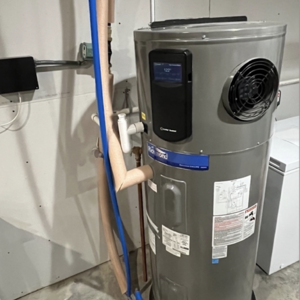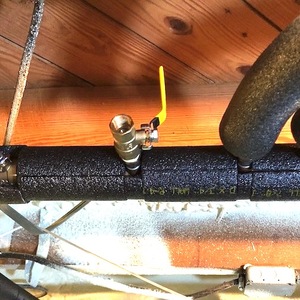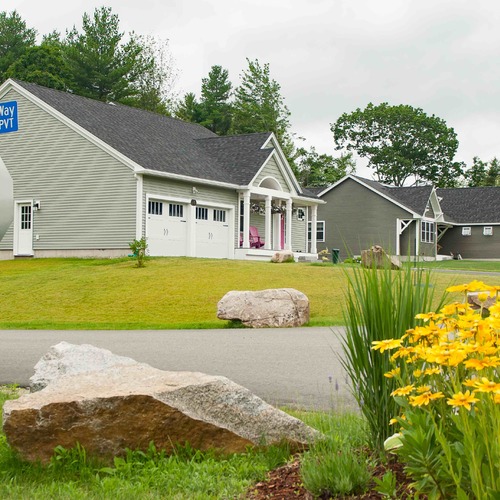
People who aren’t well versed in building science usually have the wrong ideas about how to create a high-performance building. I frequently get inquiries on how to make a project “green.” The conversation usually starts with solar PV, geothermal HVAC, and spray-foam insulation. My typical response is, “First, let’s make the building as efficient as possible, then we can look at adding high-tech and expensive solutions, as needed.” The idea is to look at the building design, simplify its volumes, reduce the square footage, and select insulation, air sealing, glazing, and location of mechanical systems that are appropriate for the design and climate.
Unfortunately, builders and homeowners often have completed plans that they aren’t interested in replacing or significantly revising. Instead, they want to “green up” what has been designed. In general, these designs have ducts in attics, overly complex volumes that are challenging to insulate and air seal, and little if any consideration for the location and design of HVAC and hot water piping systems. Without significant design changes, these homes have two choices: be marginally high-performance or spend a lot of money on labor and materials to overcome inherent flaws in the design.
The problem with attics
Too many homes in my area, Climate Zone 3, have ducts in unconditioned attics. It’s not hard to understand the value of keeping ducts in conditioned space, but when there isn’t an interior location for ducts, the only way to achieve this is to insulate the roofline, typically with spray-foam insulation. This is also a way to effectively address vaults, attic knee walls, and tray ceilings that are complicated to properly air seal and insulate.
Typically, the first thing to come up in conversation around plans like this is the extra cost to insulate the roofline. I usually respond with: “Let’s get the ducts out of the attic” or “Can we eliminate these vaults and trays?” The answer to these questions is often: “No, the design is done, we just need to make it green.”
Then we look at air sealing the ceiling, knee walls, and trays, as well as designing and sizing the HVAC system and duct sealing. All of this work comes at additional cost, which surprises the average builder, who either abandons their “green” plan or decides to spend the money for spray foam instead of the extra labor required to build a vented attic correctly.
That puts the project into the “no free lunch” category—they get high-performance with added labor or by using high-cost foam insulation. Had they elected to use a simpler design, they could have achieved the same (or better) performance at a lower cost.
Hot water on demand
Similarly, both professionals and homeowners don’t understand that getting hot water to the shower or sink quickly has nothing to do with the water heater. People ask for tankless heaters for the “instant” hot water, not realizing that the water is only hot instantly at the heater—it still has to flow through the pipes to the fixtures. Water heaters are often located in the garage or basement—often the farthest point from the bathrooms and kitchens. Plumbers run ¾-in. trunk lines around the house with ½-in. supplies to each fixture, all of which need to be filled with hot water before any arrives at a faucet. People who are tired of waiting will have a pump installed, often running continuously, which while saving water, wastes a lot of energy and acts as a sort of radiator, expelling heat throughout the house.
The best way to avoid these problems is to design the house around the plumbing. Locate heaters central to the end uses and run the shortest and smallest lines to each fixture. Other solutions include on-demand pumps that “charge” the lines with hot water. They move the water faster than running a faucet, and there is no waste water going down the drain. Gary Klein, the guru of all things hot water, has spent his career promoting efficient hot water systems. You can save a lot of water and energy, and eliminate the long wait for hot water by following his hot-water system design outlined in this post. In my own house, I installed the water heater in a central mechanical closet, and ran 1/2-in. PEX hot-water lines to each fixture. I get hot water everywhere within about 10 seconds, without any pumps.
Reaching a high level of performance in a home involves more than the building envelope. Making sure your HVAC system is installed properly and in a conditioned space, and your hot water delivery is efficient helps provide the comfort and convenience as well as the energy savings we seek.
_________________________________________________________________________
-Carl Seville is a green builder, educator, and consultant on sustainability to the residential construction industry. After a 25-year career in the remodeling industry, he and a partner founded SK Collaborative. Image courtesy of the author.
Weekly Newsletter
Get building science and energy efficiency advice, plus special offers, in your inbox.















2 Comments
Great info and link, I kept everything short in a home run system with a non-recirculating NG on-demand. I have one 3/4" line that the plumber installed and I have 1/2" to replace it. Also, put in a 2.5 gal Stiebel, which is about 2' from the on-demand and 2' from the washer (European set with heat pump dryer). Three full bathrooms (1 up, 2 down) have fixtures within ~16' or less of the on-demand, same with two hot outdoor spigots. The kitchen sink is a bit further so I installed an undersink Eemax thermostatic 2.4kW (120v 20 amp breaker). The line to the kitchen sink is fully in conditioned space (e.g., 68 F), thus, if I need a handwash, I keep flow low and get 90+ F in a couple of seconds. For dishwashing at the kitchen sink, full flow, I get warm from Eemax until hot arrives from the 2.5 gal Stiebel, which is replenished rapidly by the on-demand (the Eemax switches off once inlet is ~90 F). If I did over, I'd get a heat pump water heater. I've noticed no substantial increase in electric. Also, if you have a home run system, circulation is certainly questionable (but someone might sell you one). I've run temperature/flow on most fixtures and plotted rise.
Can anyone elaborate on the point "insulate the roofline, typically with spray-foam insulation"?
If a house in FL has a roof insulated with spray-foam, does does this make the attic appropriate for ductwork?
I understand the attic will be warmer than the air conditioned space underneath and placement here isn't optimal.
Many thanks,
Log in or create an account to post a comment.
Sign up Log in